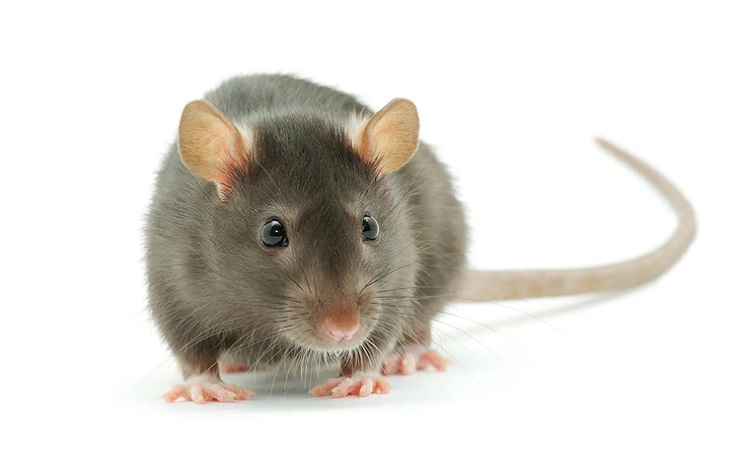Extinction specialists have tried to bring the Christmas Island rat back from the dead. The species had been exterminated in Australia a little over a century ago. To do this, they relied on a related species: the brown rat. Details of the study are published in the journal Current Biology.
Deextinction is the process of generating an organism that looks like or is an extinct species. Cloning is the most widely proposed method. There is also a method called “back-breeding,” a form of selective breeding aimed at finding an ancestral characteristic that may not be seen as frequently in the species. This method can thus recreate the traits of an extinct species, but the genome will still be different from the original species.
Many researchers are also looking at a third option: genome editing. This technique proposes to take advantage of recent advances in ancient DNA (aDNA) and genome editing technology to potentially revive extinct species. Its potential, however, remains limited by the degree to which the genome of the extinct species can be reconstructed.
In one study, a team led by evolutionary geneticist Tom Gilbert of the University of Copenhagen explored this question using the Christmas Island rat as a model.
“There will always be some kind of hybrid”
The Christmas Island rat (Rattus macleari) was originally from Australia. It could reach about 45 cm from head to tail, had large teeth, long and thick fur, and black whiskers measuring nearly eight centimeters. The species was wiped out about 120 years ago along with another species endemic to the island, named Rattus nativitatis, probably due to a disease brought by the Black Rat (Rattus rattus) when it was introduced. on the island by Europeans.
As part of this work, the researchers first resequenced almost all of its genome before comparing it with the reference genomes of various other rat species.
According to these analyses, the one from Christmas Island shared about 95% of its genes with the brown rat. Thus, almost 5% of the genome sequence was unrecoverable (1,661 genes recovered at less than 90% completeness and 26 completely absent). Even so, this makes the brown rat a good modern reference model.
Next, the researchers identified the parts of the genomes that didn’t match, then used CRISPR technology to edit the DNA of the living species to match that of the extinct species. In other words, Norway brown rats will soon turn into Christmas Island rats. Well, not exactly. Indeed, a few key genes were missing, in particular those allowing to process odors. “With current technology, it may be totally impossible to recover the complete sequence and therefore it is impossible to generate a perfect replica of the Christmas Island rat”, points out Tom Gilbert. “There will always be some kind of hybrid. »
Extinction specialists have tried to bring the Christmas Island rat back from the dead. The species had been exterminated in Australia a little over a century ago. To do this, they relied on a related species: the brown rat. Details of the study are published in the journal Current Biology.
Deextinction is the process of generating an organism that looks like or is an extinct species. Cloning is the most widely proposed method. There is also a method called “back-breeding,” a form of selective breeding aimed at finding an ancestral characteristic that may not be seen as frequently in the species. This method can thus recreate the traits of an extinct species, but the genome will still be different from the original species.
Many researchers are also looking at a third option: genome editing. This technique proposes to take advantage of recent advances in ancient DNA (aDNA) and genome editing technology to potentially revive extinct species. Its potential, however, remains limited by the degree to which the genome of the extinct species can be reconstructed.
In one study, a team led by evolutionary geneticist Tom Gilbert of the University of Copenhagen explored this question using the Christmas Island rat as a model.
“There will always be some kind of hybrid”
The Christmas Island rat (Rattus macleari) was originally from Australia. It could reach about 45 cm from head to tail, had large teeth, long and thick fur, and black whiskers measuring nearly eight centimeters. The species was wiped out about 120 years ago along with another species endemic to the island, named Rattus nativitatis, probably due to a disease brought by the Black Rat (Rattus rattus) when it was introduced. on the island by Europeans.
As part of this work, the researchers first resequenced almost all of its genome before comparing it with the reference genomes of various other rat species.
According to these analyses, the one from Christmas Island shared about 95% of its genes with the brown rat. Thus, almost 5% of the genome sequence was unrecoverable (1,661 genes recovered at less than 90% completeness and 26 completely absent). Even so, this makes the brown rat a good modern reference model.
Next, the researchers identified the parts of the genomes that didn’t match, then used CRISPR technology to edit the DNA of the living species to match that of the extinct species. In other words, Norway brown rats will soon turn into Christmas Island rats. Well, not exactly. Indeed, a few key genes were missing, in particular those allowing to process odors. “With current technology, it may be totally impossible to recover the complete sequence and therefore it is impossible to generate a perfect replica of the Christmas Island rat”, points out Tom Gilbert. “There will always be some kind of hybrid.”
A base for the mammoth?
In conclusion, the researchers believe that it is unfortunately unlikely that serious efforts will be made to bring back a species of rat. Nonetheless, using closely related extinct and extant rat species as an example here, they point out that the scale of the challenge will only multiply as the evolutionary divergence between extinct and living species increases.
The researchers hope their approach can provide a framework for others to consider when exploring the viability of other proposed de-extinction projects. They think in particular of the woolly mammoth, whose evolutionary divergence with the Asian elephant is similar to that of the brown rat and the Christmas Island rat.
In conclusion, the researchers believe that it is unfortunately unlikely that serious efforts will be made to bring back a species of rat. Nonetheless, using closely related extinct and extant rat species as an example here, they point out that the scale of the challenge will only multiply as the evolutionary divergence between extinct and living species increases.
The researchers hope their approach can provide a framework for others to consider when exploring the viability of other proposed de-extinction projects. They think in particular of the woolly mammoth, whose evolutionary divergence with the Asian elephant is similar to that of the brown rat and the Christmas Island rat.




